

Site Search
Search within product
No. 717 Published in 2020(R02) .01
Click here for PDF version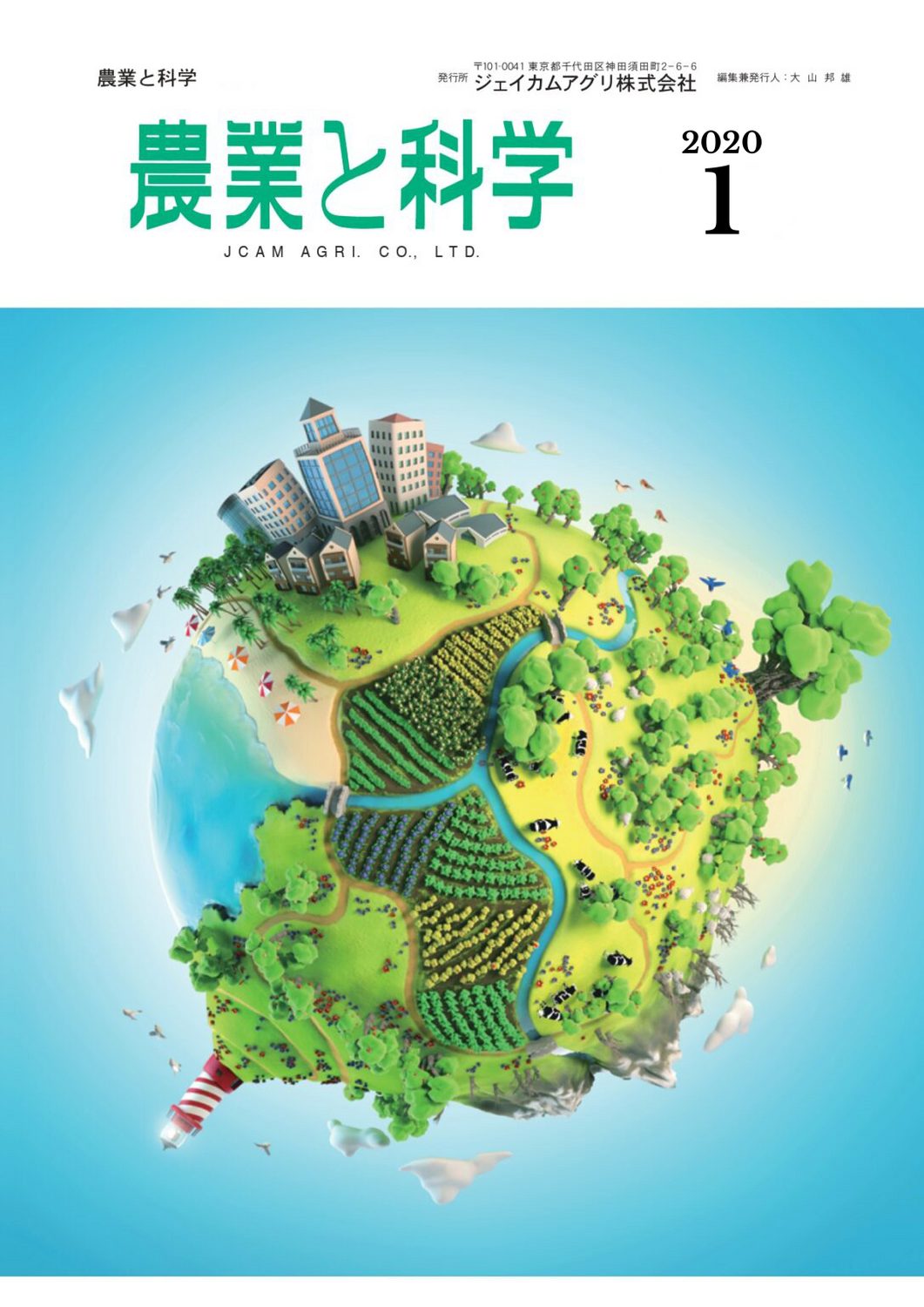
Agriculture and Science 2020/1
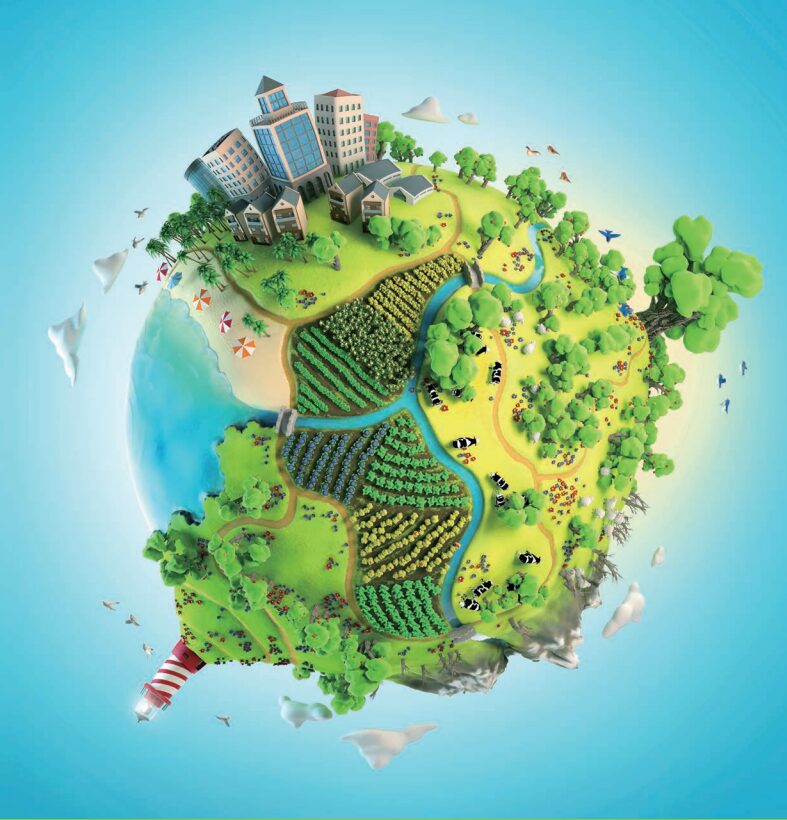

Toward the 2022 Era
Jcam Agri Co.
管理本部長 安 藤 嘉 章

Happy New Year!
At the beginning of the year 2020, I would like to extend my greetings to all the readers of "Agriculture and Science".
平成21年10月にチッソ旭肥料㈱と三菱化学アグリ㈱が合併した弊社は,おかげさまで10周年を迎え11年目に入りました。これもひとえに皆様方のご指導・ご支援の賜と存じます。改めまして厚く御礼申し上げます。
Last year was a year in which we witnessed up close the fury of repeated natural disasters. Of particular interest to me was the number of cases in which people were affected by disasters while evacuating or taking action by car. I was reminded once again that we must abandon the stereotype that because we are driving a car, we are safe. The danger of evacuation by car is that the water level rises around you while you think you are still safe, and you are unable to escape from the car. Although cars have been considered effective for evacuation, I was reminded of the high risk involved. I would like to express my deepest sympathy to all those who have suffered from the disaster, and my sincere wishes for the recovery of the affected areas.
This year is the year of the Tokyo Olympics, and as someone who was born in the previous Tokyo Olympics, I am deeply moved by this year's events. Although it is expected to be the beginning of a dynamic era, the biggest challenges facing Japan in the 2022 era are population decline and aging, and it is said that Japan will soon become an economic superpower with the fastest population decline in the world. According to the Population Projections released by the National Institute of Population and Social Security Research in April 2009, the total population was 125 million in 2020, will fall below 100 million in 2043, and is expected to drop to 92 million in 2042. This means that about a quarter of the population will decline over the next 40 years. Even more serious is the accelerating decline in the birthrate, with the working-age population (15-64 years old) expected to decrease by about one-third over the next 40 years.
The environment surrounding agriculture is expected to become more severe year by year, and the introduction of advanced technologies such as ICT, robotics, and artificial intelligence (AI) will accelerate in order to reduce agricultural materials and improve agricultural production efficiency. We will further enhance our recognition of one of our corporate philosophies, "Contribute to agriculture and related fields in Japan and around the world through fertilizer business," and based on the fertilizer technologies we have cultivated, we will continue to develop fertilizers to meet the demands of the 2022 era, with the key points of labor saving for farmers, effective utilization of fertilizer resources, reduction of production costs, and reduction of environmental impact. We will continue to develop fertilizers to meet the demands of the 2022 era.
Finally, I would like to conclude my New Year's greetings by expressing my gratitude for your continued patronage of this issue of Agriculture and Science, and my best wishes for your happiness and prosperity in the coming year.
In the Kagoshima Island Region
Actual physical and chemical properties of sugarcane cultivated soils
Kagoshima Agricultural Development Center
Toshiyuki Mochida
Introduction
Sugarcane cultivation in Japan is flourishing in the island areas of Okinawa and Kagoshima prefectures, and sugarcane for sugar production (excluding brown sugar and brown sugar) in Kagoshima Prefecture is grown on six islands from Tanegashima in the north to Yoronjima in the Amami Islands in the south (Figure 1). However, in Tanegashima and Amami Islands, it accounted for 151 TP3T and 301 TP3T, respectively, the second highest share after beef cattle. Sugarcane also accounts for a high percentage of the total cultivated area of major crops in Tanegashima and Amami Islands with 311 TP3T and 571 TP3T, respectively. Sugarcane is the main staple crop in the island areas of the prefecture.

In recent years, however, sugarcane unit yield and production have been declining in this prefecture, and recovery of unit yield and production stability have become urgent issues. In addition to weather disasters such as typhoons, outbreaks of pests and diseases, and inadequate cultivation management due to labor shortages, deterioration of soil physicochemical properties is considered to be one of the factors contributing to the decline in unit yield.
This paper introduces the types and characteristics of sugarcane cultivated soils in this prefecture, and describes the actual conditions of soil physicochemical properties, as well as problems in sugarcane production and their solutions.
2. soil type
Figure 2 shows the types of soils distributed in the sugarcane growing areas and their area percentages by parent material. The parent material of the field soils on Tanegashima is mainly volcanic ash, with black earth soils accounting for more than 90% of the total area. The remaining less than 10% are yellow soil and dune immature soil distributed mainly along the coast in the western part of the island (Figure 3).

On the other hand, the Amami Islands are composed mainly of limestone (coral), slate (sedimentary rock), granite (igneous rock), marl (sedimentary rock), and sea sand, which are very different from those of Tanegashima Island. Limestone weathered soil (hereinafter referred to as "dark red soil") accounts for approximately 541 TP3T of the total arable land area in the Amami Islands, and is widely distributed in the coastal areas of the islands. Weathered soils of slate and granite (yellow soil and red soil, hereinafter referred to as "red-yellow soil") are distributed in the mountainous and hilly areas of Amami Oshima and Tokunoshima (Fig. 4). In the eastern part of Kikai Island, about 300 ha of marl weathered soil (called jargal in Okinawa Prefecture) is distributed, and this soil is considered the most productive soil in the archipelago because it is richer in nutrients and retains water better than other soils.
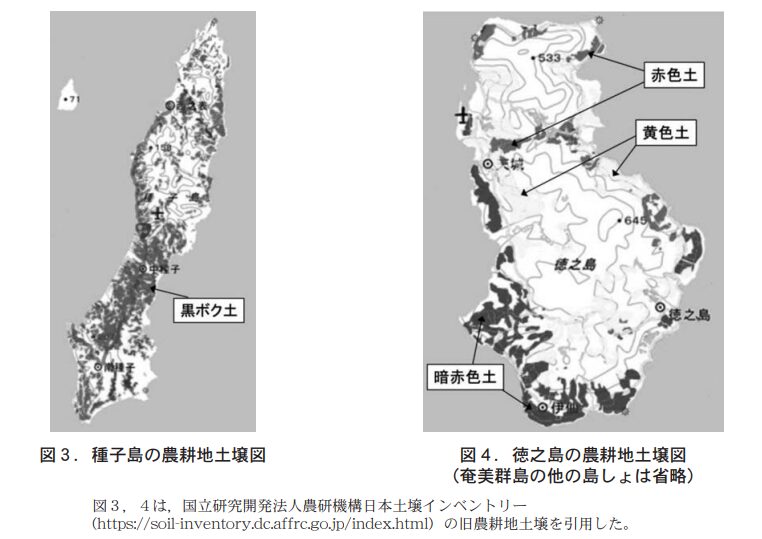
3. soil properties
Here, we mainly discuss the black-bok soils of Tanegashima Island, and the dark red and red-yellow soils of the Amami Islands.
(1) Black Bok Soil (Tanegashima Island)
The physico-chemical characteristics of the Tanegashima black soil are similar to those of the mainland Tanegashima black soil. The Tanegashima Kuroboku soil tends to be slightly thinner and has less humus content than that of the mainland, but it is more humus-rich and swollen than the sugarcane soils of the Amami Islands, and is very easy to work. In addition, because of its high water retention capacity, the sugarcane is less susceptible to drought damage in the summer. The soil pH is low and acidic, and phosphoric acid is easily deficient due to its high fixation capacity.
(2) Dark red soil (Amami Islands)
It is distributed on all islands in the archipelago except Amami Oshima. The soil is weathered from uplifted coral reefs and is very sticky and difficult to till. In Okinawa Prefecture, this soil (commonly known as "Shimajiri Merge") is regarded as an easy-to-work soil because of its well-developed soil structure and soft, swollen soil. However, in our prefecture, it is regarded as a soil with poor workability together with reddish yellow soil, which will be described later, because of the comparison with black-bok soil.
It is also susceptible to drought damage due to its high permeability and low water retention in the field. Soil pH is high, generally neutral to slightly alkaline, and lime content is high, but humus and phosphate content is low. The humus content is particularly low not only in dark red soils but also in all field soils distributed in the Amami Islands. For example, even if 4 t/10a of compost is applied, which is the upper limit of the amount of compost applied in the soil improvement project, the humus content in the soil is often less than 51 TP3T, the target value of the project.
(3) Reddish yellow soil (Amami Islands)
These soils are weathered slate and granite, and are generally highly cohesive and harden upon drying, making them difficult to work. However, some granite-weathered soils are less cohesive, and sandy soils that are less susceptible to solidification are also distributed. The soil physical properties, humus content and phosphate content are similar to those of the dark red soils described above, but the soil pH is low in many fields. Sugarcane, a grass crop, absorbs a large amount of silicate, but in general, many of the fields have low levels of edible silicate.
4. actual condition of soil physicochemical properties
(1) Soil physical properties
In recent years, with the introduction of large agricultural machinery and the increase in the area of sugarcane harvested by harvesters (harvester harvest rate for the entire province 1998: 32.91 TP3T, 2008: 71.71 TP3T, 2017: 92.61 TP3T), there is concern about the deterioration of soil physical properties due to tread pressure (Photo 1).

Table 1 shows the results of soil physical properties surveys conducted from 2011 to 2013 in sugarcane fields on Tanegashima and Tokunoshima. The average soil hardness of the next layer just below the crop layer was within the Kagoshima Prefecture soil diagnostic standard (22 mm or less) for both soils. On the other hand, the vapor fraction of soil pF1.5 was 101 TP3T or less in all soils, which was lower than the standard value (calcareous soil 151 TP3T or more, and other soils 201 TP3T or more), especially in the dark red soil.

In a survey conducted on Tokunoshima Island at about the same time from 2010, soil hardness in the next layer of dark red soil exceeded the standard value in about 40% of all survey points (data omitted). In addition, the relationship between the number of years after soil preparation and soil hardness in the next layer was investigated.

These results indicate that the subsoil in sugarcane fields tends to compact and harden regardless of soil type, especially in dark red soils with high clay content. This may have inhibited the growth of sugarcane roots and hindered the growth of sugarcane. Based on the change in soil hardness after foundation preparation, it is inferred that the deterioration in soil physical properties is due to the effects of management work during the growing season and the running of large agricultural machinery during harvesting. In order to stabilize sugarcane production, it is necessary to continue improving the subsoil layer, especially in dark red soil, by deep plowing, etc., even after the soil base is improved.
On the other hand, as described in "3. Soil Properties," the dark red and red-yellow soils of the Amami Islands were less than half of the black-box soil of Tanegashima. Especially in the dark red soil, the effective moisture content (average value) of the next layer was less than 1 ml.
(2) Soil chemistry
Table 2 shows the results of soil chemistry surveys of sugarcane fields conducted over a six-year period, 2012-2017 for Tanegashima and 2012-2017 for Tokunoshima, respectively. In the black-bok soil of Tanegashima Island, soil pH was below the standard in about 70% of the fields, and exchangeable calcium content was below the standard in 90% of the fields. In the Amami Islands reddish-yellow soil, soil pH was below the standard value in about 80% of the fields, and exchangeable calcium content was below the standard value in about 80% of the fields.
These results indicate that many of the plots in the black-bok soil of Tanegashima Island and the red-yellow soil of the Amami Islands are calcium-deficient and require acidity correction.

Regarding the content of edible phosphoric acid (toluoglinic acid) in the soil, less than 10% of the plots in the Tanegashima black granular soil were below the standard value, while approximately 70% of the plots in the Tokunoshima reddish-yellow soil and 90% of the plots in the Tokunoshima dark red soil were below the standard value. As described in "3. Soil characteristics," black granular soil has a high phosphate-fixing capacity, and there had been concern about phosphate deficiency in the past, but this survey revealed that there were few phosphate-deficient fields in sugarcane fields on Tanegashima.
In the dark red soil of Tokunoshima, more than 80% of the plots had exchangeable potassium content below the standard value.
5. problems and responses based on soil survey results
Based on the results of soil physico-chemical investigation, (1) subsoil hardening (especially dark red soil), (2) low effective moisture content (dark red soil and reddish yellow soil), and (3) soil acidification (black soil and reddish yellow soil) are the main problems for sugarcane growth. As for problem (2), construction of national dams and field irrigation are now underway in various parts of the Amami Islands, which is expected to reduce drought damage caused by water irrigation. In this section, we introduce the technologies and approaches currently under investigation and research with regard to the problems (1) and (3).
(1) Improvement of soil physical properties: Management using a towed plow (called "scoop")
The technology introduced here is a towing-type plow and its work system developed at the Tokunoshima Branch of the Center for the purpose of facilitating management operations after sugarcane harvesting. It also contributes to the improvement of soil physical properties by creating cracks in the subsoil and improving drainage (Photo 2).

In conventional rotary plowing, dead sugarcane leaves (hakama) clog the plow, making it inefficient in terms of management work. In addition, although conventional subsoiler tillage is highly effective in breaking up the tillage bed, it causes the same problem in terms of workability as described above. This technique using a subsoiler is fast (about 1/4 of the time required by rotary plowing) because it inverts the soil while burying the leaf blades, and it is possible to make two clefts at a depth of 15 cm between the beds in a single run.
(2) Optimization of soil pH: Creation of a quick reference table of neutralizing lime amounts
In order to efficiently and effectively correct acidity in sugarcane and other cultivated fields, a table of neutralizing lime amounts was prepared (Table 3). The amount of calcium carbonate (kg/10a/10cm, hereafter referred to as "calcium carbonate") required to achieve a pH of 6.0 was calculated based on data obtained to date on the amount of neutralizing lime, which was determined from the measured soil pH and cation exchange capacity (CEC) for each soil type. This is because the amount of calcium carbonate required to correct acidity varies depending on the clay content and humus content of the soil, even in the same soil type.

If the field is within an infrastructure improvement area, it is easier to understand the CEC value by referring to the data (average value of the fields within the area) (Figure 6). If the field is outside of an infrastructure improvement area, it is recommended to refer to data from neighboring infrastructure improvement areas, or if it is still difficult to determine the CEC value, the average CEC value of the same soil type should be used as a reference (Table 3, bold frame).
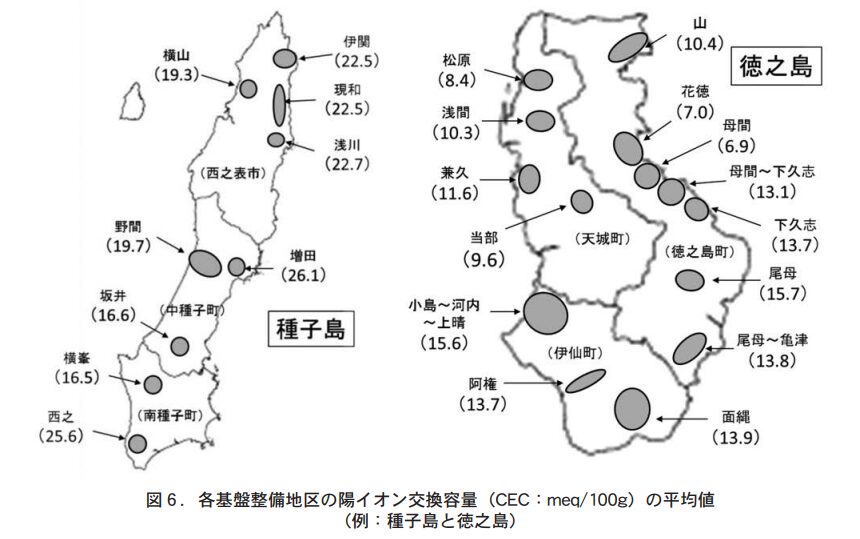
6. Conclusion
To support recovery of sugarcane yield and stable production in terms of soil management, it is important not only to improve physical properties and correct acidity, but also to address phosphoric acid and potassium deficiency in the soil, compost application, and introduction of green manure, which were not discussed in detail in this report. We hope that the actual condition of soil physicochemical properties will continue to be monitored, and that effective soil preparation will be practiced in accordance with local soil characteristics and conditions.
Cord cultivation of Earl's melon
Total basal fertilizer and water uptake and absorption patterns of fertilizer with regulated fertilizer
Former Faculty of Agriculture, Okayama University
Masaharu Masuda
Fumikazu Yamaoka
Introduction.
In the previous report (1), we discussed points to keep in mind regarding the use of coated fertilizer blends in tomato cordage cultivation. The same considerations regarding leaching of fertilizer immediately after planting apply to melons as well. Many papers have shown that one plant of ale melon requires 9 to 13 g of nitrogen fertilizer, but the authors have confirmed in several trials that LP coat can be used because fertilizer application after crossing tends to cause fruit breakage, and physiological disorders caused by ammonia nitrogen, especially butt rot, are not a problem in melons as they are in tomatoes. In melons, physiological disorders caused by ammonia-form nitrogen, especially butt rot, are not a problem, as is the case with tomatoes, so LP coat can be used. In this method, water is supplied automatically according to crop demand, and no water flows out of the container, making it possible to accurately measure the amount of water absorption (Figure 1).

(Konishi 2) divided the amount of water absorption in melons by the amount of evaporation from the instrument evaporating dish and named the value transpiration power.
However, the evaporating dish only responds to meteorological factors at the water surface, and there are many drawbacks to comprehensively reflecting atmospheric influences. Kurose3) devised a simple water evaporation meter with a porous cup attached to the end of a transparent vinyl chloride pipe, which is filled with water and sealed with a silicone stopper to measure evaporation from the porous cup. In this study, we adopted this method and measured the amount of water loss in the PVC pipe and at the same time measured the amount of water loss in a PET bottle placed upside down in the container, divided the latter by the former, and named this the "water absorption capacity" associated with plant growth. This value has no unit because it is the amount of water divided by the amount of water, and as a concept, it can be understood as the intrinsic water demand of the plant itself during the growth stage, a value that excludes various meteorological factors.
The water requirements of crops vary depending on the type of crop, the variety, and the growing environment, so it is important to predict the amount of water required before planting in order to consider economic production in agriculture, especially water availability and its means. In this paper, we compare the effects of the total fertilizer mixing method and the culture medium management method on the growth and fruit size of melons grown in sandy soil. In this study, the amount of fertilizer applied per melon plant was set slightly higher at 12.6 g of nitrogen, because the study was a comparison with culture medium management (Table 1).

Outline of cultivation
Summer-type Earls melon 'Masa' (Ueki cross) was used. The seedling medium was river sand (sieved through a 2 mm sieve), and the seedlings were potted in vinyl chloride pots with an inner diameter of 9 cm and a volume of 250 ml on April 15. At the same time, Ecolong Total 313-40 was mixed into the sand at a rate of 3 g/pot. The seedlings were watered from the bottom for about 2 weeks, and then planted in the fertilizer and culture solution areas. The fertilizer design is shown in Table 1, all of which were mixed before planting. The culture medium was managed by the so-called Otsuka A method with an EC of 1.6 dS/m until one month after mating, after which the control concentration was reduced to 1.2 dS/m because the EC value of the soil solution increased.
The amount of sand media was 3 L per plant, mixed with fertilizer the day before planting, and naturally watered with water from a PET bottle using a "root prevention watering string. The basic design was such that four PET bottles could stand per box, and 7 boxes (14 plants) in each area were tested. The amount of water loss was totaled every week except during the peak season, and the amount of water absorption was calculated by subtracting the amount of evaporation from the soil (the amount of water loss in the blank). The temperature in the greenhouses was heated to a minimum of 18°C and ventilated at 28°C. The soil temperature exceeded 35°C on many days during the latter half of the growing season, and sometimes reached 40°C. Porous cups for measuring transpiration were placed between the leaves around the fruit at 12 nodes (Fig. 2).

Results and Discussion
Fruit Survey
The harvested fruit results are shown in Table 2. Fruit weights ranged from 1.4 to 1.9 kg in the culture-fertilizer zone, whereas in the 1970s, the standard weight of the earl variety was considered to be around 1.3 kg4) , and in recent years, 1.5 to 1.7 kg is required. The average sugar content of the fruits was about 14 degrees in the culture medium and 15 degrees in the fertilizer zone, showing a significant difference between the two zones. Generally, it is believed that melon sugar content increases but fruit weight decreases when irrigation water is withheld5) . In this method of cordage cultivation without water restriction, fruit netting was homogeneous, and both fruit weight and sugar content were close to those of good quality, but the netting was low.

Water absorption and water absorption capacity
The amount of water supplied from planting to harvest was about 80 L in the culture medium area and about 89 L in the fertilizer area, and water evaporation from the soil surface during this period was about 3.6 L (Table 3).

The amount of water supplied in the cordage cultivation was clearly lower than that in the soil culture cultivation, where the amount of irrigation water per melon plant is approximately 100 L6) . The maximum water volume for both treatments was reached on July 23, one week before harvest, at 12.3 L/week in the culture and 13.1 L/week in the fertilizer treatments (approximately 1.7 to 1.9 liters/day). Evaporation from the porous cups was high in the early and late stages of growth, but low in the middle stage, probably due to the rainy season (Figure 3-B). The value obtained by subtracting the soil evaporation from the water supply and dividing it by the evaporation from the porous cups is defined as the "water absorption capacity" of the plant, as described above.

In other words, the value obtained by dividing the amount of water absorption in Figure 3-B by the amount of evaporation from the porous cups is the "water absorption capacity" shown in Figure 3-C. The "water absorption capacity" increased with plant growth and reached its maximum about 3 weeks after mating, after which it began to decrease. The "water absorption capacity" increased with plant growth, reaching its maximum about 3 weeks after mating, and then began to decrease. This result verified that the water absorption capacity was not affected by weather fluctuations such as sunny, cloudy, and rainy days (Fig. 4).

This result suggests that the concept of "water absorption capacity" is effective in identifying the growth stage in which the plant's own water demand is at its maximum, independent of weather factors. When water absorption capacity declines, root nutrient absorption also shifts from positive to negative, and it is important to manage fertilizer in a so-called "rightward" direction, even when applying mono-fertilizer or chemical fertilizer.
Soil solution analysis
For the four plants in both zones, solutions were collected in the evening from the pre-filled porous cups. Trends in EC and pH are shown in Figure 5. The concentration of the collected solution in the culture medium-controlled area increased rapidly from about 40 days after mating and reached a high value of 6.0 EC on July 27 at harvest time. Conversely, in the fertilizer-controlled area, the EC was as high as 5.0 in the early stage of growth, but at the time of mating, it was 0.2, and remained low until harvest. This suggests that most of the nutrients leached from the fertilizer particles were absorbed by the roots and were not present in the soil solution. This pattern of soil solution variation was also observed in tomatoes1) . pH remained in the range of 5 to 7 in both compartments. In the fertilizer zone, pH exceeded 8 at the end of the growing season, but this did not have a significant effect on growth. This value gradually decreased with successive cropping.

At present (8th crop), 10 g of burned chicken manure ash or about 40 g of bitter lime is mixed into 6 L of the total layer before planting, and growth is stable. The trend of concentration of each component was similar to that of EC except for H2PO4-P (Fig. 6), which was assumed to be converted to insoluble phosphoric acid by the end of the cultivation period in both composts. Table 3 shows the total amount of elements calculated from the input amounts. However, K, Ca, and Mg were applied approximately twice as much in the culture medium-controlled area as in the fertilizer-controlled area. Zhang and Nukatani7) reported that in greenhouse melon cultivation with rockwool, the culture medium concentration should be increased in the first half of the growth stage and decreased in the second half to correspond to the nutrient absorption characteristics. However, the EC of the medium solution still increased rapidly. In contrast, the EC in the fertilizer-controlled area remained near zero, indicating that none of the components were present in the solution and were fully absorbed by the roots. Yellowish brown discoloration was observed at the leaf margin at the fruiting node in the fertilizer-controlled area, suggesting K deficiency, but there was no problem with fruit quality.
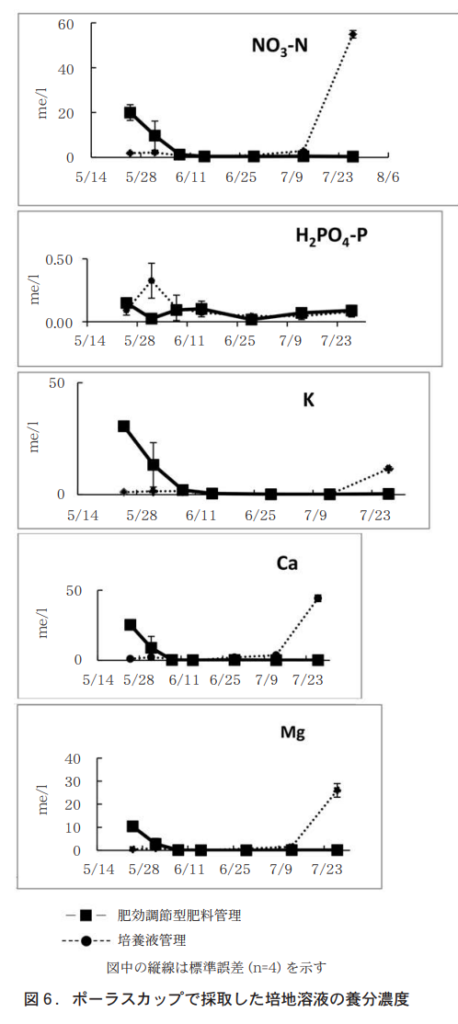
Based on the above results, it can be said that the fertilizer management using the regulated fertilizer is very reasonable because it is consistent with the absorption characteristics of melons and leaves no nutrients in the soil solution. In the case of melons, as reported for tomatoes1) , if fertilizer is applied in tea bags and the remaining fertilizer is removed at the end of cultivation, it will be easy to reuse the medium semi-permanently. In this regard, we have been using tea bags for several years for continuous cropping of melons, and we will discuss the factors of this continuous cropping in the next paper, including solar disinfection.
Reference materials
1.トマトの紐栽培−肥効調節型肥料の紐上置き肥.
桝田正治.農業と科学708:1−6.2019.
2.マスクメロンの水消費と消費特性.
小西国義.岡山大農学報43:27−37.1974.
3.ポーラスカップを利用した蒸発計の開発.
黒瀬義孝.日本農業気象学会中四国支部報21:1−7.2008.
4.新版温室メロンの栽培と経営.
神谷円一.誠文堂新光社.1973.
5.メロン果実への光合成産物の転流・分配に及ぼす葉位および灌水量の影響.
宍戸良洋・湯橋勤・施山紀男・今田成雄.園芸学会誌60(4):897−903.1992.
6.メロンの養液土耕栽培における給液量と生育の関係.
鈴木雅人・金子賢一.茨城園研報11:9−14.2003.
7.温室メロンのロックウール栽培における培養液濃度と養分吸収の関係.
張洪基・糠谷明.園芸学会誌66(2):307−312.1997.